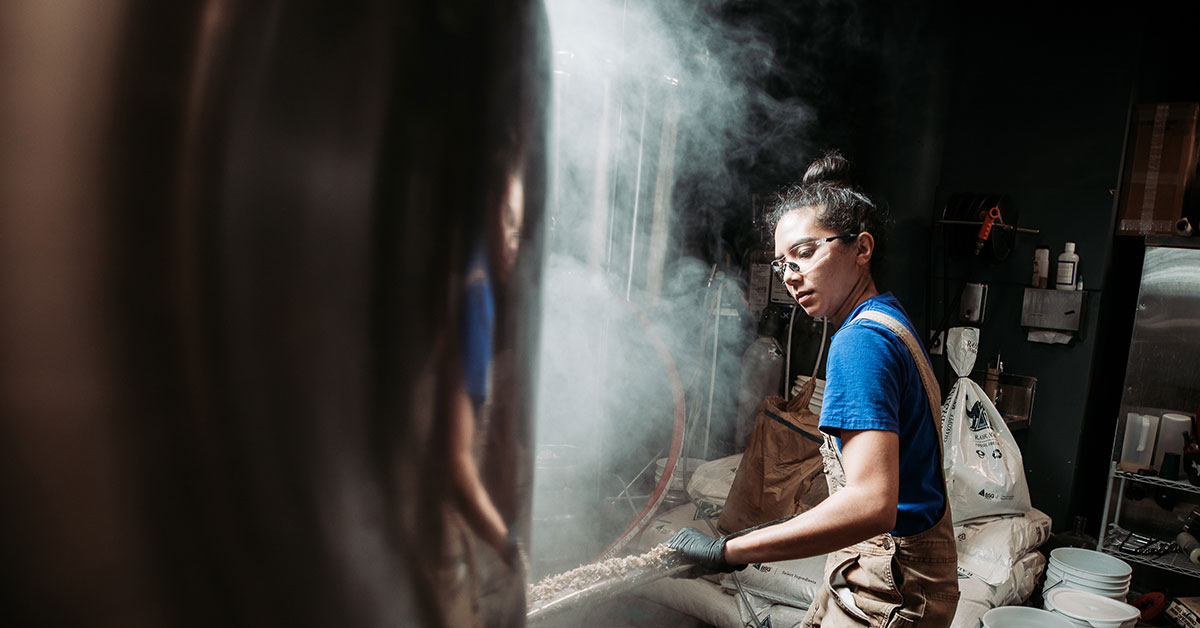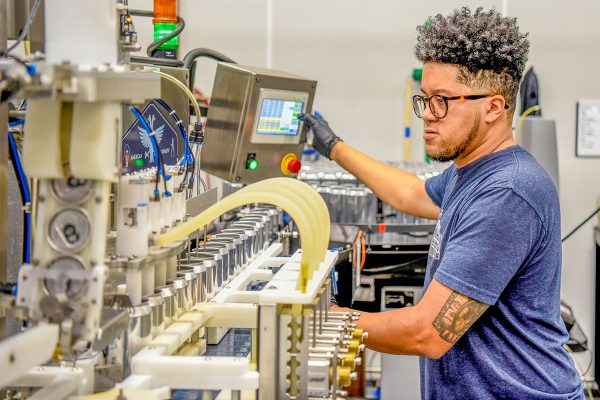Some jobs in a brewery have always been hot, like cleaning out the mash tun or standing over a kettle. Maybe your brewery is in a warm and humid part of the country and every task is hot. Lately, high temperature events across the country have elevated this workplace hazard to new levels. Heat stress can result in serious harm to your body and make you more likely to have an accident.
What Is Heat Stress?
Heat stress is a general term for a set of conditions that can range from uncomfortable cramps or a rash to serious physiological and neurological episodes called heat exhaustion and heatstroke. Heat stress usually progresses from bothersome to bad to worse. If you know what early signs to look for, you can seek remedies and avoid the most serious complications.
Heat stress can be broken into three stages: early signs, heat exhaustion, and then heatstroke. Be cautioned, though. There are cases where an individual seemingly bypasses early signs, then goes directly to heatstroke while still sweating and collapses, the so-called “fast cooker.”
Stages of Heat Stress
Early Signs
Unusual and Noticeable
- Heat Cramps: sharp, painful cramps in muscles being heavily strained – limbs, abdomen, and neck
- Heat Rash: painful raised bumps caused by sweat pore blockage – where clothes or body parts rub, such as armpits, inside elbows, cleavage, and groin
- Change in Urination: dark color, infrequent, lower volume than usual
- Heat Syncope: the experience of almost blacking out, “seeing stars,” or a headrush – due to a drop in blood pressure
- Sunburn: redness and touch sensitivity to skin
Heat Exhaustion
Body is Struggling to Maintain Steady Core Temperature
- Overheating: profuse sweating, clammy skin; fast, weak pulse; increased respiration rate
- Energy Loss: weak, dizzy, out of breath, muscular fatigue
- Dehydration: thirsty, cramps, salt deposits on clothing
- Feeling Unwell: headache, nausea, vomiting
Heatstroke
Cooling Systems Fail – Emergency! Call 911!
- Overheating: sweating slows/stops, hot dry skin, core temp above 101°F, shallow breathing
- Feeling Unwell: severe headache, nausea, dragging feet, collapse, unconsciousness
- Neurological: slurred speech, confusion, argumentative, poor judgment
Treatment
If the victim is conscious, sweating, and fairly coherent, they likely do not have heatstroke. Heat exhaustion has three major causative factors: dehydration, low energy, and excess heat inside and outside of the body. Treatment should address all of these.
Try these first aid recommendations. Seat the victim in a cool, shaded area. Get the person water or a sports beverage, and possibly an energy bar. Avoid excessively sweet drinks or snacks. Remove or pull back excess clothing and cool them with air movement, sprinkling them with cool water, or by applying ice packs to the neck or immersing wrists in ice water. If they begin to noticeably recover, continue treatment and either send them home early or keep under observation for the rest of the shift. If symptoms persist, get the person medical attention right away.
Respond to Heat Stress
- Hydration: replace depleted fluids with ample water and sports drinks, but don’t drink too fast
- Rest Cycles: take frequent rests, don’t be ashamed of needing to take a break
- Cool Environment: recover by sitting down in the shade or in a cool space with moving air
- Monitor: make sure you are clearheaded and not dizzy or fatigued before returning to work
Prevention
Heat stress episodes can be treated, especially if detected early. But even in the best cases, the worker feels unwell, productivity declines, and the chance of incidents and accidents increases.
The perfect conditions for creating heat stress are when three things occur simultaneously: dehydration, low bodily supplies of food energy and minerals, and exposure to increased heat. Counteracting one, two, or all three of these factors is key to reversing the progressive nature of heat disorders.
Beat the Heat with these Tips
- Heat stress is best avoided altogether by anticipating hot work conditions and acclimatizing to heat. You should know what to do to prevent dehydration, exhaustion, and overheating.
- Hydration: take frequent water breaks, every 15-20 minutes, 3-4 cups per hour; avoid diuretic liquids containing caffeine, alcohol, refined sugars; overly rehydrate after a hot work day to help get ahead on the next day
- Electrolytes: consume sports beverages or mineral supplements
- Food Energy: eat complex carbohydrates, vegetables, and fruits; avoid simple sugars
- Clothing: cover up with light, loose, quick-drying fabrics; wear a wide hat in direct sunlight
- Acclimatization: it may take up to two weeks to get used to a hot environment, but only a few days to lose the acclimatization
- Environmental Heat: shield against radiant heat exposure and direct sunlight; adjust level of work activity, pace yourself
- Buddy System: reduce exertion and keep an eye on each other for warning signs
- Training: train everyone in prevention and recognition of heat disorders
- Know Your Limits: risk increases with age, weight, body fat, drugs and certain medications, diabetes and general sickness; adult men are three times more likely to get a heat disorder than women
Additional Heat Stress Resources
Posters
Toolbox Talks
- Great ready-to-use toolbox talk from Missouri Safe Work (PDF)
- Concise video toolbox talk with good prevention tips
- OSHA Quickcard (PDF)
Videos
- Straight talk from a Texas registered nurse
- Great prevention recommendations from an Aussie team
- Focusing on hydration
- Recommendations for hydration and electrolytes
- OSHA heat illness prevention, emphasizing acclimatization and prevention
- Remembering Tim: A life lost to heat illness at work
Deeper Dive
- NIOSH Risk Factors
- Heat Stress Awareness Guide from Occupational Health and Safety Council of Ontario (Canada) with checklist
- Presentation with explanations of physiology of heat stress
- Heat Illness Prevention from OSHA
Questions about heat disorders? Email Matt Stinchfield, Brewers Association Safety Ambassador, at safetyambassador@brewersassociation.org






